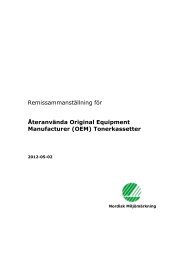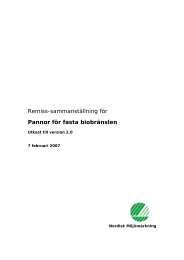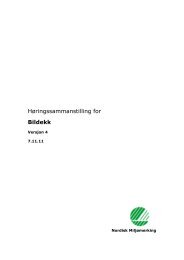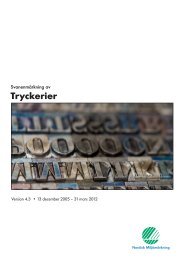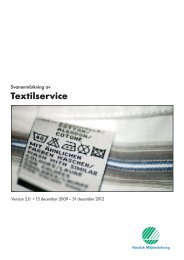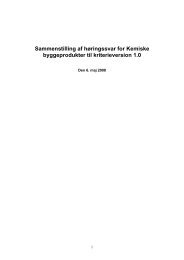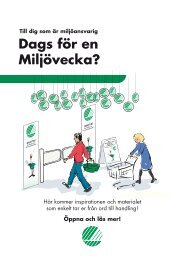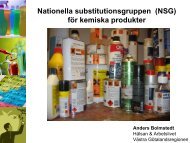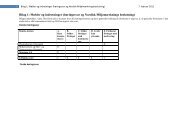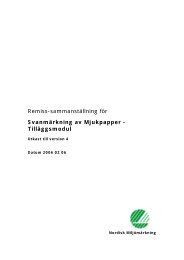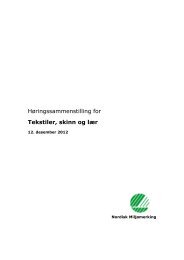Småhus, flerbostadshus och förskolebyggnader - Svanen
Småhus, flerbostadshus och förskolebyggnader - Svanen
Småhus, flerbostadshus och förskolebyggnader - Svanen
Create successful ePaper yourself
Turn your PDF publications into a flip-book with our unique Google optimized e-Paper software.
Nordisk Miljømerking<br />
Hus, leiligheter og barnehager 089/versjon 2<br />
Høringssammenstilling, oppdatert 10. august 2010<br />
The lacking scientific basis is even more clearer in the case of the proposed generalised<br />
ban of halogenated flame retardants. This ban covers also substances that do not require<br />
any labelling as they are not considered dangerous or harmful. It would be illogical to<br />
refer to the precautionary principle in this case, as detailed risk assessments are available.<br />
RT firmly believes that the (supposed) negative impacts must be compared with the<br />
potential benefits. If the benefits largely outweigh the risks, the substance should not be<br />
simply banned. In any case, this proposal for Ecolabel should establish the proposed bans<br />
with scientific evidence. It is also confusing that the Background report (appendix 8, page<br />
3) only refers to brominated flame retardants, whereas the requirements O17 and O22 ban<br />
all halogenated flame retardants.<br />
The Nordic Ecolabel proposes chemical material indicators without reference to the<br />
end‐use application (O14‐O21) and without assessing what benefits / negative effects<br />
these substances provide over the building life cycle. This will lead to material choices<br />
which may neither provide the most environmentally friendly nor the most sustainable<br />
solution for a given building over its life cycle.<br />
Existing legislation must be taken into account in material related indicators<br />
.....<br />
This proposal for Ecolabel prohibits certain substances / R phrases without verifying<br />
whether the use of the substance/ product is leading to risks for users or the environment.<br />
In addition it doesn’t assess whether the use of a certain substance / product improves the<br />
life cycle performance of the overall building (durability, different safety issues, reduced<br />
material use etc.). On the other hand, examples can be found that use or presence of<br />
certain substances which are shown to be carcinogenic is authorised without restrictions.<br />
Taking into account what is said above on environmental and health protection makes the<br />
aims of this proposal for Ecolabel confusing. This impression is reinforced by the<br />
proposed exclusion of substances for which scientific evidence shows that they are not<br />
dangerous.<br />
Construction polyurethane industry of Finland (CPIF)<br />
The case of halogenated flame retardants (O17, O22)<br />
The lacking scientific basis is even more striking in the case of the proposed generalised<br />
ban of halogenated flame retardants. This ban covers also substances that do not require<br />
any labelling as they are not considered dangerous or harmful. It would be illogical to<br />
refer to the precautionary principle in this case, as detailed risk assessments are available.<br />
CPIF firmly believes that the (supposed) negative impacts must be compared with the<br />
potential benefits. If the benefits largely outweigh the risks, the substance should not be<br />
simply banned. In any case, the Ecolabel should underpin the proposed bans with<br />
scientific evidence. It is also astonishing that the Background report (appendix 8, page 3)<br />
only refers to brominated flame retardants, whereas the requirements O17 and O22 ban<br />
all halogenated flame retardants.<br />
Example:<br />
86 (165)



